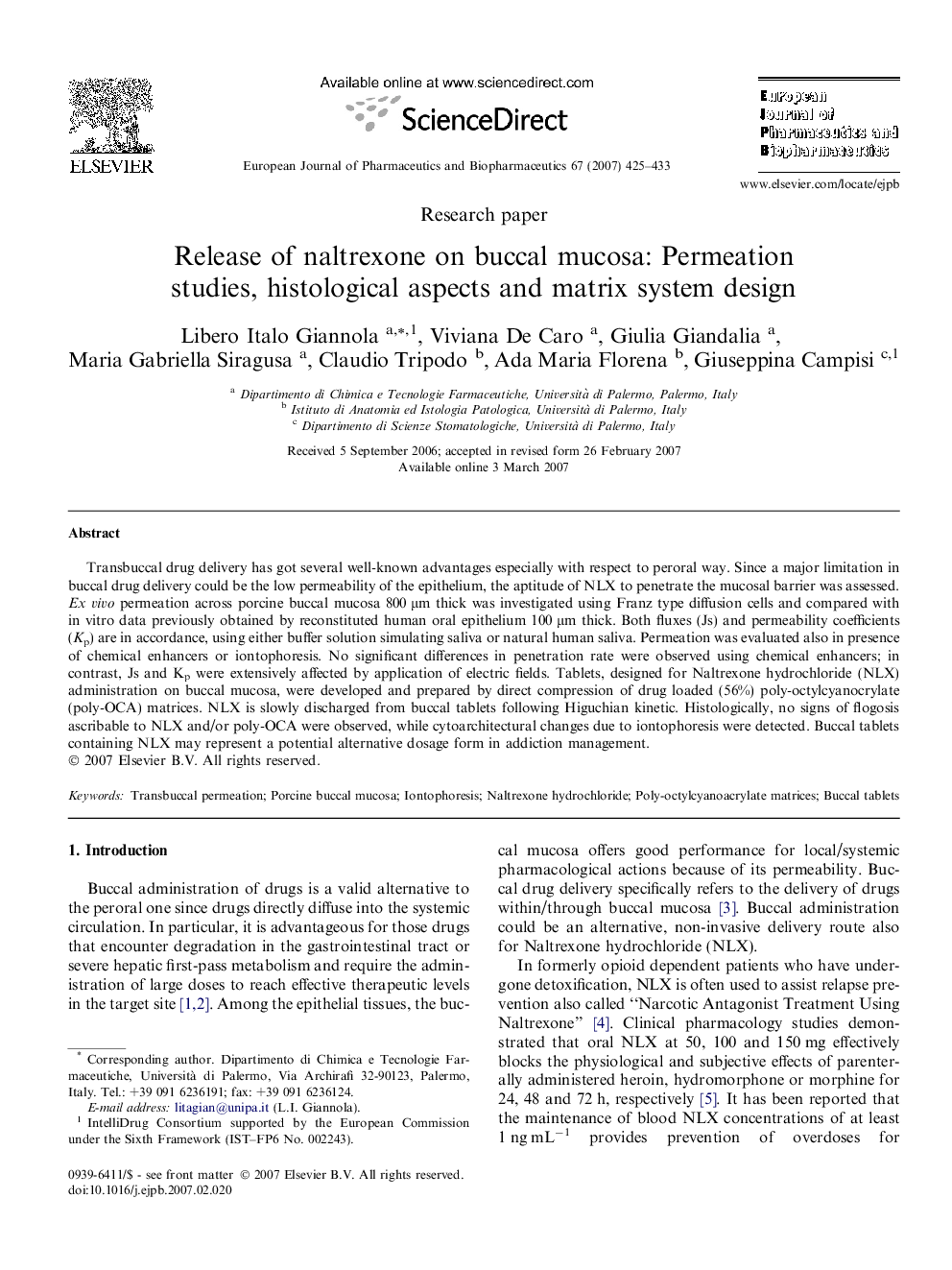| Article ID | Journal | Published Year | Pages | File Type |
|---|---|---|---|---|
| 2084829 | European Journal of Pharmaceutics and Biopharmaceutics | 2007 | 9 Pages |
Transbuccal drug delivery has got several well-known advantages especially with respect to peroral way. Since a major limitation in buccal drug delivery could be the low permeability of the epithelium, the aptitude of NLX to penetrate the mucosal barrier was assessed. Ex vivo permeation across porcine buccal mucosa 800 μm thick was investigated using Franz type diffusion cells and compared with in vitro data previously obtained by reconstituted human oral epithelium 100 μm thick. Both fluxes (Js) and permeability coefficients (Kp) are in accordance, using either buffer solution simulating saliva or natural human saliva. Permeation was evaluated also in presence of chemical enhancers or iontophoresis. No significant differences in penetration rate were observed using chemical enhancers; in contrast, Js and Kp were extensively affected by application of electric fields. Tablets, designed for Naltrexone hydrochloride (NLX) administration on buccal mucosa, were developed and prepared by direct compression of drug loaded (56%) poly-octylcyanocrylate (poly-OCA) matrices. NLX is slowly discharged from buccal tablets following Higuchian kinetic. Histologically, no signs of flogosis ascribable to NLX and/or poly-OCA were observed, while cytoarchitectural changes due to iontophoresis were detected. Buccal tablets containing NLX may represent a potential alternative dosage form in addiction management.
